| |
Common Buckwheat | |
| |
|
|
| |
|
|
| | Return to Special Field Crops main page
Polygonaceae
Common buckwheat (Fagopyrum esculentum) likely originated in central and western China and was brought to Europe during the Middle Ages. It is not a member of the grass family and thus is not a ‘true' cereal. The erect plant grows from 2 to 5 feet and has heart-shaped leaves and brown, gray-brown or black triangular seeds. Buckwheat performs best in cool, moist climates. In Canada, Manitoba accounts for approximately 70% of the annual buckwheat acreage on average. A seeding rate of 35-72 lbs/acre is recommended. It has a short growing period of 80 to 90 days. Because its growth habit is indeterminate, its seed crop does not mature all at one time. Buckwheat flour is popular in pancake mixes. Honey produced from buckwheat is dark and strong-flavoured, favoured by some consumers. The main market for Canadian buckwheat is Japan, where buckwheat flour is combined with wheat flour to produce ‘Soba,' or buckwheat noodles.

Buckwheat Flowers
| 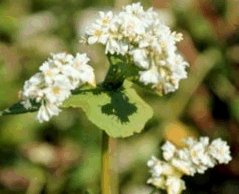 |
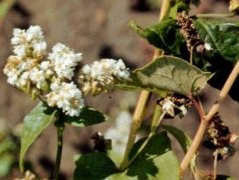
Buckwheat plant
| 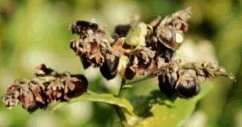
Buckwheat seeds |
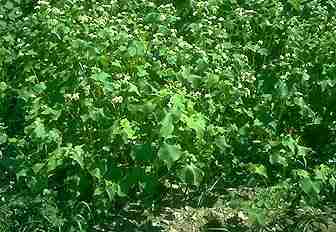
Buckwheat plants (photo Paul Laflamme)
| 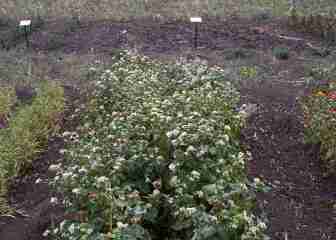
Buckwheat plants (photo Paul Laflamme) |
Alberta Agriculture & Forestry, Ag-Info Centre 310-3276 |
|
| |
|
|
| |
For more information about the content of this document, contact Neil Whatley.
This document is maintained by Mary Ann Nelson.
This information published to the web on June 8, 2001.
Last Reviewed/Revised on August 17, 2017.
|
|